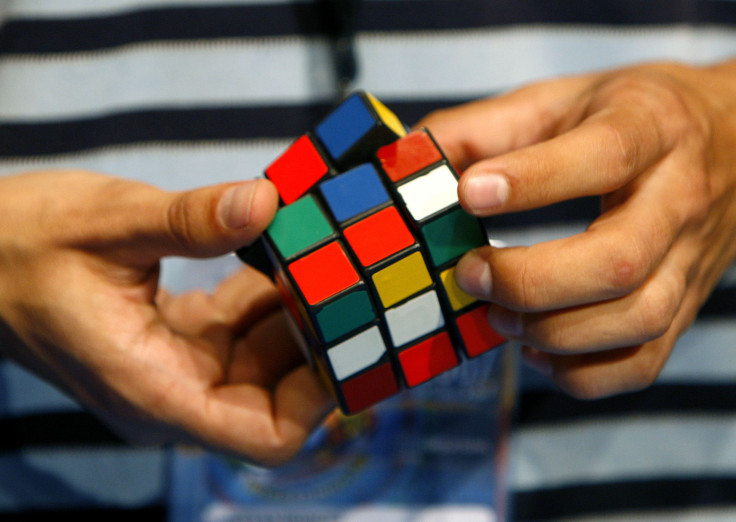Rubik's Cube 40th Anniversary: 9 Facts Behind The Famous 3-D Toy Puzzle

The Rubik’s Cube has finally hit its mid-life crisis as it reaches its 40th anniversary this year.
Invented in 1974 by Hungarian sculptor and architecture professor Erno Rubik, the Rubik’s cube has challenged and frustrated countless numbers of players who have ever picked up the 3-D toy puzzle. While the Rubik’s Cube reached its peak popularity in the 1980s, the more than 350 million cubes sold since then make it one of the best-selling toys of all time.
In celebration of the Rubik’s Cube’s 40th anniversary, International Business Times took a look back at the history to bring you some facts about the 3-D cube’s rise to fame.
Rubik’s Cube wasn’t the 3-D toy puzzle's original name
While the Rubik’s Cube is now known by the name of its inventor, the toy originally started out its life as the Magic Cube in Hungary. It was eventually licensed to Ideal Toy Corp. in 1979 and rebranded as the Rubik’s Cube before its appearance internationally in 1980.
Rubik’s Cube was patented in 1975
A year after Erno Rubik invented his then-named “Magic Cube,” he patented it in Hungary. However, prior to the invention of the Rubik’s Cube, an earlier attempt at a 2x2x2 rotational cube was invented by Larry Nichols in 1970, who later attempted to sue the Rubik’s Cube’s licensee, Ideal Toy Corp., in 1984 for patent infringement. While the Rubik’s 2x2x2 cube was found to infringe on Nichols’s patent, the original Rubik’s Cube was found to be not infringing.
There’s only one solution for a Rubik’s Cube, but many more ways to scramble one up
There’s only one solution to the Rubik’s Cube puzzle, where each side of the cube consists of the same colors. However, there are approximately 43 quintillion ways scramble the cube before playing.
Interest in the Rubik’s Cube resulted in the birth of speedcubing
After the Rubik’s Cube’s western release, players became increasingly interested in speed solving the 3-D toy puzzle. In 1982, the first world championship was held, fueling the speed solving craze known as speedcubing. Modern Rubik’s Cube competitions are currently governed by the World Cube Association
Despite the complexity of the Rubik’s Cube, humans have solved the Rubiks Cube in less than 6 seconds
For some players the Rubik’s Cube can take hours or days to solve. For others, solving the Rubik’s cube only takes minutes and for the best of the best, mere seconds. The current human record holder, Mats Valk of the Netherlands, solved the Rubik’s Cube in 5.55 seconds in 2013.
Robots have solved the Rubik’s Cube faster than humans
While Valk is certainly fast, he wasn't faster than the Cubestormer II robot, built from Lego kits, which solved the 3D puzzle in 5.27 seconds in 2011. However, the Cubestormer II’s record was shattered by its successor, the Cubestormer III, in March 2014, solving the 3D puzzle in 3.253 seconds.
The most moves needed to solve a Rubik’s cube was only found in 2010
Since the invention of the Rubik’s Cube, enthusiasts and researchers have searched for years for what is minimum number of moves necessary to solve the 3D puzzle. In July 2010, a team of researchers, with the aid of Google computing power, found that the Rubik’s Cube could be solved in just 20 moves.
Rubik’s Cube comes in more sizes smaller and larger than its original 3x3x3 design
Whether you love or hate the Rubik’s cube, there are now plenty of other versions available for all skill levels. Rubik’s Cubes as small as 2x2x2 and as large by 5x5x5 were created for those looking for more of a challenge.
It took a long time for Erno Rubik to solve his own puzzle the first time
Speedy Rubik’s cube players can solve the puzzle in seconds. It took Rubik himself almost a month to solve the puzzle after he invented it in 1974.
© Copyright IBTimes 2025. All rights reserved.






















